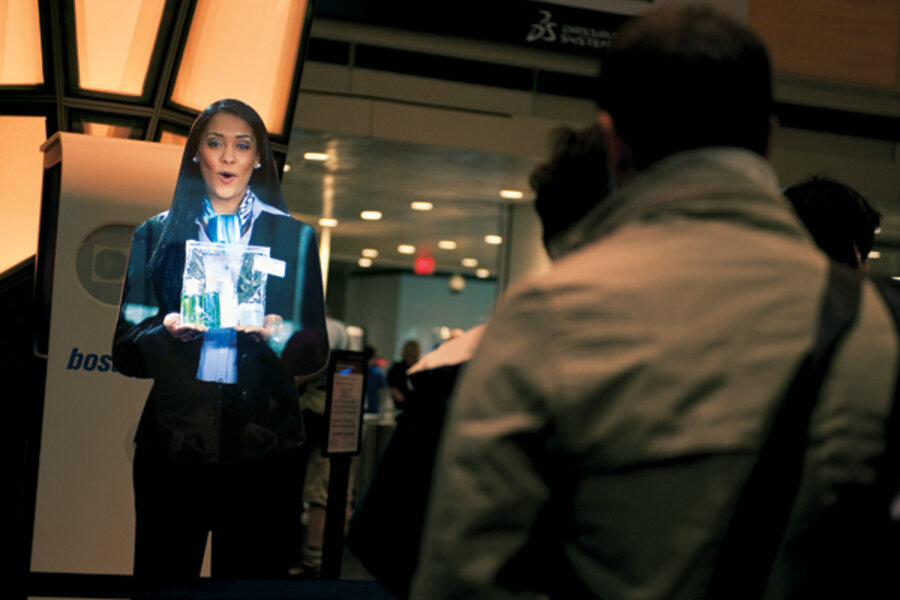Hologramlike performers hit the stage – and airport, and drugstore
Loading...
Travelers flying out of Boston’s Logan International Airport may have met its newest assistant, Carla. She’s upbeat, informative – but not human.
This hologramlike virtual assistant stands by one of Logan’s checkpoints, explaining the rules for passing through security. As she bops through each regulation, pictures of cellphones and toiletries (neatly packed into plastic bags) appear above her hands. After the two-minute spiel, Carla repeats the message in Spanish.
“It grabs people’s attention,” says Edward Freni, director of aviation for Logan. “They look at her. They listen, hopefully. Maybe it makes [security screenings] a little easier.”
As projection technology improves, airports have become the latest industry to experiment with virtual helpers. At least five US airports have called in digital assistants, part of several pilot programs designed to calm travelers and make airports more efficient.
Each airport avatar has its own message. Carla focuses on security. Washington Dulles International Airport has Paige, who rolls through more general information and tosses in the occasional history lesson. New York’s three major airports will introduce virtual assistants this summer to help people find their way around.
Carla and Paige cannot answer questions. They’re simple video recordings rear-projected onto a sheet of gray acrylic that's cut in a vaguely human shape. This setup gives the resulting image a 3-D, hologram effect (unless you look from the side). Logan paid $26,000 for the equipment, according to Mr. Freni. The virtual assistant did not replace any human staff members.
Projections have taken on several roles over the past year. Tensator, the company that created virtual assistants for Boston, Washington, and several airports in Europe, also created one for a Duane Reade drug store in New York.
This spring, the Coachella music festival in California featured a surprise performance by rapper Tupac Shakur, who died 16 years ago. The illusion involved projectors, reflections, and a mylar screen, stage tricks used by public speakers to give pre-recorded talks. But Coachella was the first highly publicized use of the technology to digitally revive a performer.
Since then, several outlets have promised that Freddie Mercury, Marilyn Monroe, and Elvis Presley would appear on stages soon.
For more on how technology intersects daily life, follow Chris on Twitter @venturenaut.
[Editor's note: This is an updated version of an article that appeared in the August 6 issue of the Monitor weekly magazine.]





